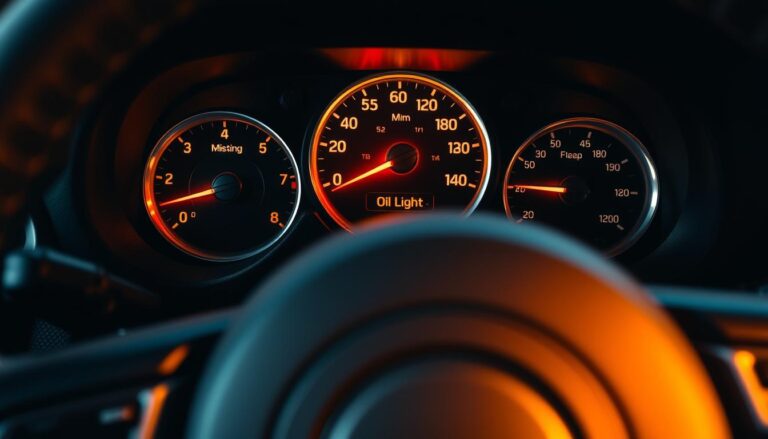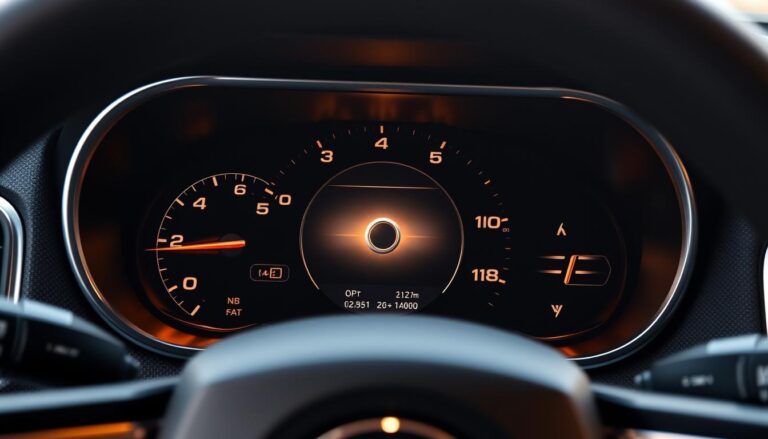The Service4WD alert on a Jeep Grand Cherokee can be a concerning message for drivers. This alert is related to the vehicle’s four-wheel-drive system, indicating a potential issue that requires attention.
The Alert Message is often associated with problems in the transfer case control module (TCCM), which controls the shifting in the 4WD system. Issues with the TCCM, such as those described in an article about transfer case control module symptoms, can trigger the Service4WD message.
Understanding the cause of the Service4WD alert is crucial for maintaining the vehicle’s performance and safety. This article will delve into the possible reasons behind this alert message and provide insights on how to address the issue.
Key Takeaways
- The Service4WD alert is related to the four-wheel-drive system.
- Issues with the transfer case control module (TCCM) can trigger the alert.
- The alert message may indicate a need for maintenance or repair.
- Understanding the cause is crucial for maintaining vehicle performance and safety.
- The TCCM controls shifting in the 4WD system and monitors various vehicle parameters.
What Does Service4WD Mean on Jeep Grand Cherokee: Understanding the Alert Message
If you’re driving a Jeep Grand Cherokee and notice the Service4WD alert, it’s crucial to understand how the Four-Wheel Drive System operates to address the problem effectively. The Service4WD message is an indicator of a potential issue within the vehicle’s Four-Wheel Drive System.
The Four-Wheel Drive System in Jeep Grand Cherokee
The Jeep Grand Cherokee is equipped with an advanced Four-Wheel Drive System designed to provide optimal traction and control on various terrains. This system is capable of switching between two-wheel drive and four-wheel drive modes based on driving conditions.
The Four-Wheel Drive System in the Jeep Grand Cherokee includes several key components:
- Transfer case: responsible for distributing power between the front and rear axles.
- Electronic Control Module (ECM): manages the Four-Wheel Drive System’s functions and interactions with other vehicle systems.
- Front and rear axles: work together to provide power to all four wheels when needed.
Understanding these components is essential to diagnosing issues related to the Service4WD alert. A malfunction in any of these parts can trigger the alert message.
How the Alert System Functions
The alert system in your Jeep Grand Cherokee is designed to monitor the vehicle’s systems and notify you of any potential problems. When the Service4WD message appears, it indicates that the vehicle’s onboard computer has detected an issue with the Four-Wheel Drive System.
| Alert Message | Description | Possible Cause |
|---|---|---|
| Service4WD | Indicates a problem with the Four-Wheel Drive System. | Malfunction in transfer case, ECM, or axle. |
| Service4WD (flashing) | Severe issue with the Four-Wheel Drive System requiring immediate attention. | Critical malfunction in a key component. |
As noted by automotive experts, “The Service4WD alert is a critical indicator of the vehicle’s Four-Wheel Drive System health. Ignoring this message can lead to more severe problems and compromise the vehicle’s performance and safety.”
“Modern vehicles like the Jeep Grand Cherokee rely heavily on sophisticated computer systems to manage their advanced features. When an alert like Service4WD appears, it’s a sign that the system has detected an anomaly that needs to be addressed.”
Understanding how the alert system functions and what the Service4WD message signifies is crucial for Jeep Grand Cherokee owners. It enables them to take prompt action to diagnose and potentially fix issues before they become more serious.
Common Causes of the Service4WD Alert
Understanding the root cause of the Service4WD alert is crucial for maintaining your Jeep Grand Cherokee’s four-wheel drive system. The alert can be triggered by various issues, ranging from problems with the Electronic Control Module to faults in the Transfer Case.
Electronic Control Module Issues
The Electronic Control Module (ECM) plays a vital role in managing the four-wheel drive system. Issues with the ECM can lead to improper functioning of the system, triggering the Service4WD alert. Faulty ECMs can cause erratic shifting between two-wheel and four-wheel drive modes, leading to decreased vehicle performance.
Symptoms of ECM issues include inconsistent four-wheel drive engagement and disengagement. In some cases, the ECM may need to be reprogrammed or replaced to resolve the issue.
Transfer Case Problems
The Transfer Case is another critical component of the four-wheel drive system. Problems with the Transfer Case, such as worn-out gears or bearings, can cause the Service4WD alert to appear. A faulty Transfer Case can lead to reduced traction and potentially cause the vehicle to become stuck in four-wheel drive mode.
| Symptom | Possible Cause | Solution |
|---|---|---|
| Unusual noises from the Transfer Case | Worn-out gears or bearings | Replace worn-out parts |
| Vehicle stuck in four-wheel drive | Faulty Transfer Case | Repair or replace the Transfer Case |
Sensor Malfunctions
Sensors play a crucial role in monitoring the four-wheel drive system’s performance. Malfunctions in these sensors can lead to incorrect data being sent to the ECM, triggering the Service4WD alert. Faulty sensors can cause the system to malfunction, leading to reduced vehicle traction.
Common symptoms of sensor malfunctions include intermittent four-wheel drive engagement and dashboard warning lights.
Wiring and Connection Failures
Wiring and connection failures can also cause the Service4WD alert to appear. Corrosion or damage to the wiring can disrupt the signals between the sensors and the ECM. Inspecting the wiring and connections regularly can help prevent such issues.

By understanding these common causes, Jeep Grand Cherokee owners can take proactive steps to diagnose and repair issues related to the Service4WD alert. Regular maintenance and inspections can help prevent many of these problems.
Potential Consequences of Ignoring the Alert
Failing to address the Service4WD alert can result in compromised vehicle performance and safety risks. The Service4WD system is integral to the operation of your Jeep Grand Cherokee, particularly in challenging driving conditions. When this system is not functioning correctly, it can lead to a range of issues.
Impact on Vehicle Performance
Ignoring the Service4WD alert can lead to degraded vehicle performance. This includes reduced traction, which is critical for navigating through slippery or uneven terrain. The four-wheel-drive system is designed to provide optimal power distribution to all wheels, ensuring stability and control. When this system is compromised, you may experience:
- Reduced engine performance due to increased strain on the drivetrain.
- Increased risk of wheelspin or loss of traction, particularly on slippery surfaces.
- Potential for increased wear on drivetrain components due to improper functioning.
For more information on how the four-wheel-drive system works, you can visit AutoNation Mobile Service’s blog on Service4WD.
Safety Concerns When Driving
The safety implications of ignoring the Service4WD alert are significant. A malfunctioning four-wheel-drive system can lead to reduced vehicle stability, especially under challenging driving conditions. This can result in:
- Increased stopping distances due to reduced traction.
- Higher risk of skidding or losing control of the vehicle.
- Potential for accidents, particularly in adverse weather conditions.

Addressing the Service4WD alert promptly is crucial to maintaining both the performance and safety of your Jeep Grand Cherokee. By understanding the potential consequences of ignoring this alert, you can take proactive steps to ensure your vehicle remains in optimal condition.
Diagnosing Service4WD Issues in Your Jeep Grand Cherokee
Effective diagnosis of Service4WD problems involves using diagnostic tools and understanding error codes. Diagnosing issues with the Service4WD system in your Jeep Grand Cherokee is crucial for maintaining its performance and safety.
Using Diagnostic Tools
Diagnostic tools are essential for identifying the root cause of Service4WD issues. OBD-II scanners are commonly used for this purpose, as they can read error codes stored in the vehicle’s onboard computer.
- ELM327 OBD-II scanners are popular among DIY enthusiasts due to their affordability and compatibility with a wide range of vehicles.
- Advanced scanners like the Autel MaxiScan MS509 offer more detailed diagnostic capabilities, including live data streaming and freeze frame data.
Common Error Codes and Their Meanings
Understanding error codes is vital for diagnosing Service4WD issues. Some common codes related to the Service4WD system include:
- P1832 – Transfer case 2-wheel drive solenoid circuit malfunction.
- P1870 – Transmission component slipping.
- U0401 – Invalid data received from ECM/PCM.
These codes can provide valuable insights into the specific problems affecting your vehicle’s four-wheel drive system.
Model-Specific Diagnostic Considerations
Different models of the Jeep Grand Cherokee may have unique diagnostic considerations. For instance, models equipped with the Quadra-Trac II system may require specific diagnostic procedures compared to those with other four-wheel drive systems.
It’s essential to consult the vehicle’s repair manual or a professional mechanic familiar with your Jeep Grand Cherokee’s model to ensure accurate diagnosis.
When to Seek Professional Help
While many Service4WD issues can be diagnosed using DIY methods, some problems may require professional assistance. If you’re unsure about the diagnosis or if the issue persists after attempting repairs, it’s advisable to seek help from a certified mechanic or a Jeep dealership.
- Complex problems involving the transfer case or electronic control module may necessitate professional diagnosis and repair.
- Professional mechanics have access to advanced diagnostic equipment and manufacturer-specific repair information.
Solutions and Repair Options
Understanding the root cause of the Service4WD issue is crucial for applying the correct fix. Once the problem is diagnosed, Jeep Grand Cherokee owners can explore various repair options to get their vehicle back to optimal performance.
DIY Fixes for Minor Issues
For minor issues, DIY fixes can be a cost-effective solution. Simple tasks such as checking and cleaning the four-wheel drive system’s sensors or updating the vehicle’s software can sometimes resolve the Service4WD alert. “Regular maintenance is key to preventing complex issues,” as noted by automotive experts.
Some DIY tasks to consider include:
- Checking wiring and connections for damage or corrosion
- Replacing faulty sensors or modules
- Updating the vehicle’s software to the latest version
Professional Repair Costs and Considerations
For more complex issues, professional repair may be necessary. The cost can vary widely depending on the nature of the problem, ranging from a few hundred to several thousand dollars. Factors influencing cost include the need for specialized tools, the complexity of the repair, and labor rates.
As
“The cost of repair is not just about the parts; it’s also about the labor and expertise required to fix the issue correctly.”
Preventative Maintenance Tips
Preventative maintenance is crucial for avoiding Service4WD issues. Regular checks and maintenance tasks can help identify potential problems early. Tips include regularly inspecting the vehicle’s wiring and connections, keeping the vehicle’s software up to date, and ensuring that all maintenance is performed on schedule.
Dealer vs. Independent Shop Repairs
When it comes to repairs, Jeep Grand Cherokee owners have the option of using either a dealership or an independent repair shop. Dealerships offer the advantage of manufacturer-specific training and equipment, but independent shops can often provide more competitive pricing. The choice between the two should be based on the nature of the repair, the owner’s budget, and personal preference.
Ultimately, the key to resolving Service4WD issues lies in prompt diagnosis and choosing the right repair option. Whether through DIY fixes or professional repairs, getting the issue addressed is crucial for maintaining the vehicle’s performance and safety.
Conclusion
The Service4WD alert on Jeep Grand Cherokee is a critical indicator that requires prompt attention. Understanding the causes and consequences of this alert is essential to maintaining the vehicle’s performance and safety.
As discussed, issues with the Electronic Control Module, transfer case, sensors, and wiring can trigger the Service4WD alert. Ignoring this alert can lead to decreased vehicle performance and potentially compromise safety while driving.
By diagnosing the issue using diagnostic tools and understanding common error codes, Jeep Grand Cherokee owners can take corrective action. Whether through DIY fixes or professional repairs, addressing the Service4WD alert is crucial to ensuring the vehicle’s optimal functioning.
Regular maintenance and prompt attention to alerts like Service4WD can help extend the lifespan of your Jeep Grand Cherokee. Stay informed, and stay safe on the road with a properly maintained vehicle.
FAQ
What does the Service4WD alert message on my Jeep Grand Cherokee indicate?
The Service4WD alert message indicates a problem with the four-wheel drive system, which could be caused by various issues, including Electronic Control Module problems, Transfer Case malfunctions, or sensor failures.
Can I continue driving my Jeep Grand Cherokee with the Service4WD alert on?
While it’s possible to continue driving, ignoring the alert can lead to decreased vehicle performance and potentially compromise safety. It’s recommended to diagnose and address the issue promptly.
How do I diagnose Service4WD issues in my Jeep Grand Cherokee?
Diagnosing Service4WD issues involves using diagnostic tools to identify error codes, understanding the meaning of these codes, and considering model-specific diagnostic factors. If unsure, it’s advisable to seek professional help.
What are some common causes of the Service4WD alert message?
Common causes include Electronic Control Module issues, Transfer Case problems, sensor malfunctions, and wiring or connection failures. Each of these potential causes should be examined in detail to diagnose the issue accurately.
Can I fix Service4WD issues myself, or do I need professional help?
Minor issues might be resolved with DIY fixes, but more complex problems require professional assistance. It’s essential to assess the issue accurately and decide whether to attempt a DIY repair or seek professional help.
How can I prevent Service4WD issues in my Jeep Grand Cherokee?
Regular preventative maintenance, such as checking the four-wheel drive system, updating software, and addressing any issues promptly, can help prevent Service4WD problems.
Are there any specific considerations for repairing my Jeep Grand Cherokee’s four-wheel drive system?
Yes, when repairing the four-wheel drive system, consider whether to use a dealership or an independent repair shop, and factor in the costs associated with professional repairs.
What are the potential consequences of ignoring the Service4WD alert message?
Ignoring the Service4WD alert can lead to decreased vehicle performance, compromised safety, and potentially more costly repairs down the line.


